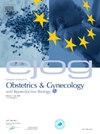Machine learning applications in placenta accreta spectrum disorders
IF 1.5
Q3 OBSTETRICS & GYNECOLOGY
European Journal of Obstetrics and Gynecology and Reproductive Biology: X
Pub Date : 2024-12-24
DOI:10.1016/j.eurox.2024.100362
引用次数: 0
Abstract
This review examines the emerging applications of machine learning (ML) and radiomics in the diagnosis and prediction of placenta accreta spectrum (PAS) disorders, addressing a significant challenge in obstetric care. It highlights recent advancements in ML algorithms and radiomic techniques that utilize medical imaging modalities like magnetic resonance imaging (MRI) and ultrasound for effective classification and risk stratification of PAS. The review discusses the efficacy of various deep learning models, such as nnU-Net and DenseNet-PAS, which have demonstrated superior performance over traditional diagnostic methods through high AUC scores. Furthermore, it underscores the importance of integrating quantitative imaging features with clinical data to enhance diagnostic accuracy and optimize surgical planning. The potential of ML to predict surgical morbidity by analyzing demographic and obstetric factors is also explored. Emphasizing the need for standardized methodologies to ensure consistent feature extraction and model performance, this review advocates for the integration of radiomics and ML into clinical workflows, aiming to improve patient outcomes and foster a multidisciplinary approach in high-risk pregnancies. Future research should focus on larger datasets and validation of biomarkers to refine predictive models in obstetric care.
求助全文
约1分钟内获得全文
求助全文
来源期刊

European Journal of Obstetrics and Gynecology and Reproductive Biology: X
Medicine-Obstetrics and Gynecology
CiteScore
2.20
自引率
0.00%
发文量
31
审稿时长
58 days
 求助内容:
求助内容: 应助结果提醒方式:
应助结果提醒方式:


